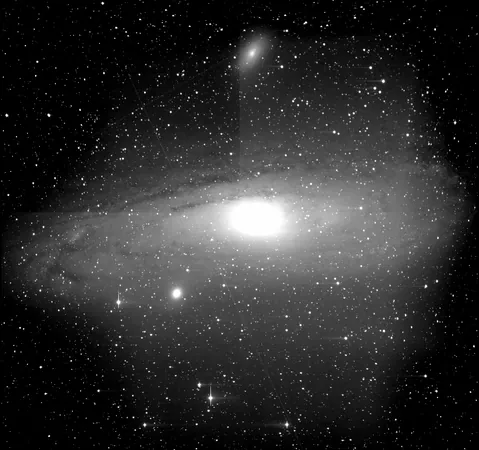
Mysterious Green Swirls in the Baltic Sea: Is Pine Pollen the New Algae?
2025-05-08
Author: Jacob
A Surprising Discovery in the Baltic Sea
A jaw-dropping revelation has emerged from a 2023 study published in "Remote Sensing of Environment." Researchers, led by Chuanmin Hu from the University of South Florida, uncovered something astonishing on the Baltic Sea's surface: expansive slicks made entirely of pine (Pinus sylvestris) pollen! Forget harmful algae blooms—these slicks, captured in stunning satellite imagery, are airborne pollen clusters driven by wind and ocean currents. This groundbreaking discovery reshapes our understanding of marine ecosystems and terrestrial influences on ocean processes.
What Are Pollen Slicks?
These pollen slicks stand out for their unique optical characteristics. Unlike typical marine phenomena like algal blooms, they showcase a remarkable increase in reflectance between 400 to 500 nanometers, a spectral signature distinct to pollen grains. Over a decade-long satellite monitoring period from 2000 to 2021, these slicks appeared in 14 different years, making their earliest debut on May 10 and their latest on June 16. The longest slick event lasted a stunning 22 days from May 12 to June 2, 2018.
Ecological Significance of Pollen
Far from being merely an oddity, these slicks play a critical role in marine ecology. Rich in organic carbon, pollen grains can significantly impact nutrient cycling in oceanic environments. Their deposition into the sea introduces organic matter that serves as a food source for various marine organisms—similar to the role of leaf litter in freshwater systems. This intriguing connection raises questions about the influence of pollen on the marine food web.
Unleashing the Power of Satellite Technology
The remarkable identification of pollen slicks was made feasible by cutting-edge satellite technology. Using the European Space Agency's Sentinel-2A satellite, scientists captured crisp false-color images of the Baltic Sea's surface. The advanced MultiSpectral Instrument enabled the visualization of these greenish swirls against the deep blue ocean, illustrating the unparalleled power of remote sensing to monitor environmental changes globally. This capability provides crucial data for ongoing research and conservation efforts.
Climatic Implications of Pollen Slicks
The presence of pollen slicks isn't just a fascinating phenomenon; it poses significant ecological and climatic questions. Rich in organic carbon, these grains contribute to the ocean's carbon cycle, potentially influencing both global carbon levels and marine productivity. As the grains decompose, they enrich the nutrient pool, supporting a diverse array of marine life. Surprisingly, the frequency of these slicks appears to be surging, possibly linked to climate change—an alarming trend highlighted by a 2021 North American study noting a 21% rise in annual pollen levels since 1990.
Impacts on Fisheries and Environmental Monitoring.
The implications of this research extend beyond curiosity. As lead author Chuanmin Hu suggests, tracking pollen aggregation can yield valuable insights for fisheries studies. Understanding how these slicks correspond to ocean currents and nutrient flows may enhance our management of marine ecosystems. Moreover, pinpointing the effects of terrestrial pollen on specific fish species could be crucial for assessing the impact of land-based actions on marine life.
In conclusion, the enigmatic green swirls of pollen in the Baltic Sea not only unveil a hidden aspect of marine ecology but also prompt a rethinking of how terrestrial elements interact with ocean processes. With ongoing research and monitoring, we can uncover the broader implications for our planet’s delicate balance.









 Brasil (PT)
Brasil (PT)
 Canada (EN)
Canada (EN)
 Chile (ES)
Chile (ES)
 Česko (CS)
Česko (CS)
 대한민국 (KO)
대한민국 (KO)
 España (ES)
España (ES)
 France (FR)
France (FR)
 Hong Kong (EN)
Hong Kong (EN)
 Italia (IT)
Italia (IT)
 日本 (JA)
日本 (JA)
 Magyarország (HU)
Magyarország (HU)
 Norge (NO)
Norge (NO)
 Polska (PL)
Polska (PL)
 Schweiz (DE)
Schweiz (DE)
 Singapore (EN)
Singapore (EN)
 Sverige (SV)
Sverige (SV)
 Suomi (FI)
Suomi (FI)
 Türkiye (TR)
Türkiye (TR)
 الإمارات العربية المتحدة (AR)
الإمارات العربية المتحدة (AR)